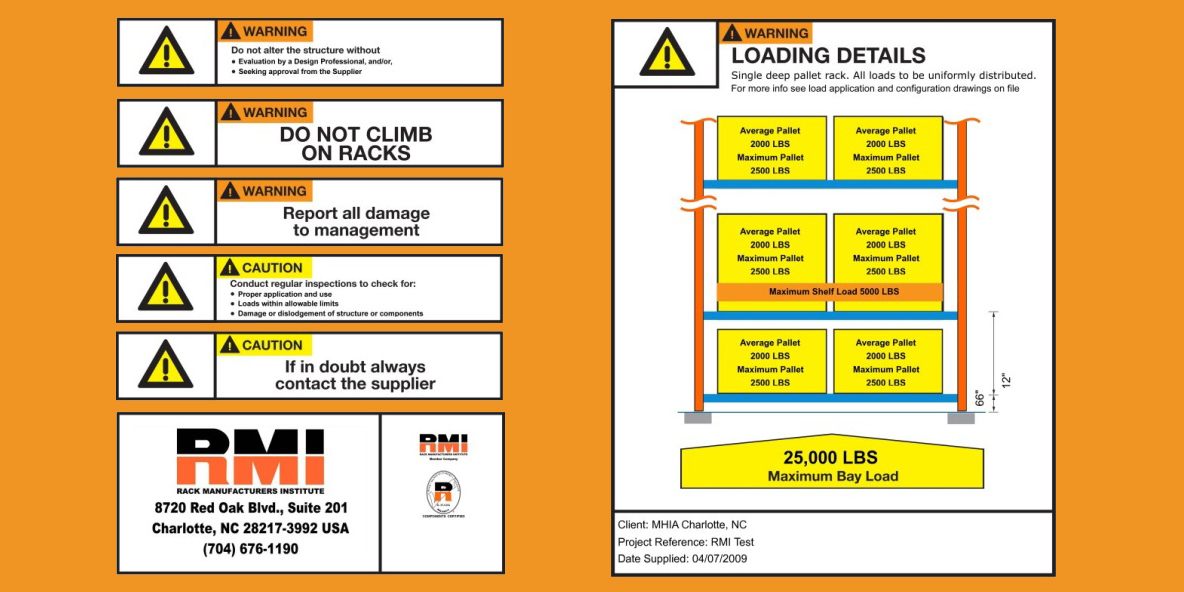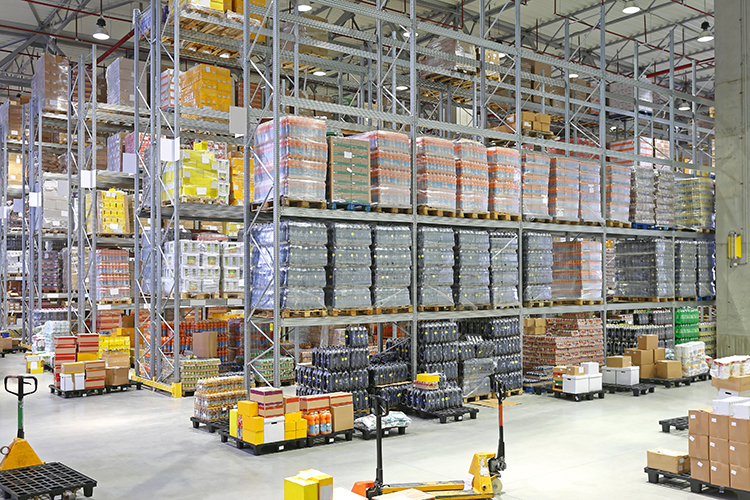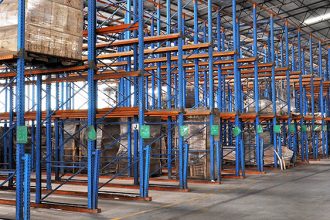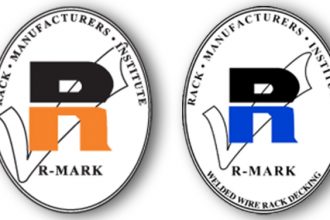People And Pallet Rack: Safety And Signage Best Practices

With more than 9.1 billion square feet of warehousing space in the U.S., pallet rack is everywhere. That pervasiveness, however, means that personnel could easily take its safety and reliability for granted. Therefore, owners and operators of warehouses and distribution centers have an obligation to safeguard employees working in and around industrial storage rack. To help them do so, the Rack Manufacturers Institute (RMI) offers multiple recommendations for protecting people and pallet rack through safety and signage best practices.
Training Helps Keep People and Pallet Rack Safe
The most important safety best practice is repetitive training, said Carlos Oliver, President of Frazier Industrial Company, an RMI member.
“Continuously teach your associates and forklift operators how to safely interact with rack,” he advised. “Don’t allow people to climb into pallet rack for any reason. Don’t permit them to walk on rack decking. Train forklift operators how to safely place and remove loads. This is increasingly difficult today, as more facilities are losing operators and not taking the time to train the replacements.”
Common loading mistakes include attempting to place a load that is too tall into a storage position. This results in the load impacting and/or dislodging the beam above and potentially causing a system collapse. Further, operators should only place uniformly distributed loads on rack beams to evenly spread their weight. Not doing so can create a point load that results in a beam failure.
Load Plaque Signage Provides Safety Guidance

Typically provided by the pallet rack manufacturer, load capacity plaques advise people of key safety best practices when working in and around pallet racks. Normally mounted at the end of each row, this signage displays safe rack loading details. These include:
- The maximum unit load allowed per level.
- The average unit load expected per row.
- Total loading expected in interconnected bays.
- The maximum total load per bay.
- Spacing and number of storage levels in the original rack design.
RMI’s ANSI MH16.1: Design, Testing and Utilization of Industrial Steel Storage Racks, section 4.5, outlines the details required on load capacity plaques, noted Oliver.
“Because ANSI MH16.1 is referenced by the International Code Council’s International Building Code, capacity plaque use is typically required by states, counties, and cities,” he said. “OSHA also refers to this RMI standard for recommended safety measures, including using this signage. This is especially concerning in seismic areas where a misplacement of higher weight loads than the system was designed for could result in a rack failure.”
Oliver added that personnel and rack owners should refer to the Load Application and Rack Configuration (LARC) drawings provided with the system. The LARC drawings detail maximum safe storage capacity for the pallet rack. They also show safe, permissible configuration options that utilize the system’s supplied components.
“Never allow personnel to adjust rack beams or remove them without first consulting the LARC drawings,” Oliver cautioned. “An unapproved configuration can create an overloaded situation that is not safe.”
Inspect Racks for Damage
To further safeguard people and pallet rack, schedule periodic rack inspections. RMI’s standards do not dictate how often to inspect racks, said Oliver. He noted that best practices range from monthly to annually.
“In general, the more activity that occurs in and around the racking, the higher the risk of damage. Therefore, inspect racks in those situations more frequently,” he noted. “For example, if an operation has a high turnover of inventory, regular case picking, handles heavy loads, or has high vehicle traffic, then inspections should happen more often.”
Best practice is to inspect the entire rack system at least once annually. Inspect areas that are more prone to damage — such as the ends rows or pass-through areas — monthly.
That said, it’s also important to teach employees what rack damage looks like, added Oliver. “They should immediately report any damage they see to their manager or supervisor and empty the rack bay and block off the area in case of a collapse.”
To safeguard personnel, isolate and unload damaged rack promptly. Repair or replace any damaged sections as soon as possible following RMI’s recommendations. These best practices are outlined in the association’s Guideline for the Assessment and Repair or Replacement of Damaged Rack — Version 2.0.
Get More Pallet Rack Safety Guidance
RMI offers multiple resources detailing both standards and best practices that enhance people and pallet rack safety. This includes a series of videos, presentations, publications, case studies, frequently asked questions. Additionally, an MHI Cast podcast recording about rack safety is available.




